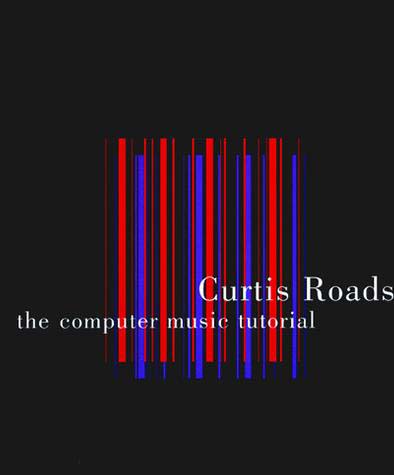Arnold Schoenberg: Theory of Harmony (1911–) [DE, IT, ES, EN, PT]
Filed under book | Tags: · composition, harmony, music, music theory, sound recording

“This book will come as a joy, a revelation, a warm reassurance. From this one book one might well learn less about harmony than about form, about aesthetics, even about life. Some will accuse Schoenberg of not concentrating on the topic at hand, but such an accusation, though well-founded, would miss the point of Theory of Harmony, because the heart and soul of the book is to be found in his vivid and penetrating digressions. They are the fascinating reflections of a great and humane musician who was a born writer as well.”
German edition
First published in 1911
Third edition, 1922
Publisher Universal Edition, Vienna
516 pages
English edition
Translated by Roy E. Carter, based on the third edition, published in 1922
Publisher University of California Press, 1983
ISBN 0520049446, 9780520049444
440 pages
Harmonielehre (German, 3rd Edition, 1922, added on 2013-12-11)
Manuale di armonia (Italian, trans. Giacomo Manzoni, 1963/1973, added on 2013-12-11)
Tratado de armonía (Spanish, trans. Ramon Barce, 1979, added on 2013-12-11)
Theory of Harmony (English, trans. Roy E. Carter, 1983, updated on 2012-8-3)
Harmonia (Portuguese, trans. Marden Maluf, 1999, added on 2013-12-11)
Curtis Roads, et al: The Computer Music Tutorial (1996–) [English, French]
Filed under book | Tags: · algorithm, computer music, music, music theory, sound recording, sound synthesis

“The Computer Music Tutorial is a comprehensive text and reference that covers all aspects of computer music, including digital audio, synthesis techniques, signal processing, musical input devices, performance software, editing systems, algorithmic composition, MIDI, synthesizer architecture, system interconnection, and psychoacoustics. A special effort has been made to impart an appreciation for the rich history behind current activities in the field.
Profusely illustrated and exhaustively referenced and cross-referenced, The Computer Music Tutorial provides a step-by-step introduction to the entire field of computer music techniques. Written for nontechnical as well as technical readers, it uses hundreds of charts, diagrams, screen images, and photographs as well as clear explanations to present basic concepts and terms. Mathematical notation and program code examples are used only when absolutely necessary. Explanations are not tied to any specific software or hardware.”
Publisher MIT Press, 1996
ISBN 0262680823, 9780262680820
xx+1234 pages
Reviews: Sam Reese (Bulletin of the Council for Research in Music Education, 1997), Douglas Geers (Current Musicology, 2001), Gregory Taylor (Cycling ’74, 2016).
The Computer Music Tutorial (English, DJVU, 22 MB, updated on 2021-4-8)
L’audionumérique: musique et informatique (French, trans. Jean de Reydellet, 3rd ed., 1999/2016, 15 MB, added on 2021-4-8)
Corrections and revisions (added on 2017-11-20, updated on 2021-4-8)
Nils L. Wallin, Björn Merker, Steven Brown (eds.): The Origins of Music (1999)
Filed under book | Tags: · biology, biomusicology, cognition, ethnomusicology, evolution, language, linguistics, music, music history, music theory, neuroscience, sound recording

What biological and cognitive forces have shaped humankind’s musical behavior and the rich global repertoire of musical structures? What is music for, and why does every human culture have it? What are the universal features of music and musical behavior across cultures? In this groundbreaking book, musicologists, biologists, anthropologists, archaeologists, psychologists, neuroscientists, ethologists, and linguists come together for the first time to examine these and related issues. The book can be viewed as representing the birth of evolutionary biomusicology—the study of which will contribute greatly to our understanding of the evolutionary precursors of human music, the evolution of the hominid vocal tract, localization of brain function, the structure of acoustic-communication signals, symbolic gesture, emotional manipulation through sound, self-expression, creativity, the human affinity for the spiritual, and the human attachment to music itself.
Contributors: Simha Arom, Derek Bickerton, Steven Brown, Ellen Dissanayake, Dean Falk, David W. Frayer, Walter Freeman, Thomas Geissmann, Marc D. Hauser, Michel Imberty, Harry Jerison, Drago Kunej, François-Bernard Mâche, Peter Marler, Björn Merker, Geoffrey Miller, Jean Molino, Bruno Nettl, Chris Nicolay, Katharine Payne, Bruce Richman, Peter J. B. Slater, Peter Todd, Sandra Trehub, Ivan Turk, Maria Ujhelyi, Nils L. Wallin, Carol Whaling.
Publisher MIT Press, 2001
Bradford Books series
ISBN 0262731436, 9780262731430
512 pages
PDF (updated on 2012-8-3)
Comment (1)
